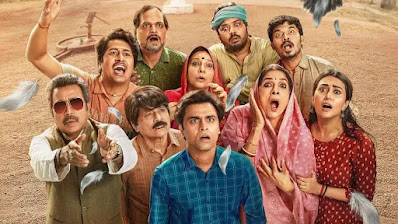Revisiting a definitive - 3
Today we visit the near silent movie 2011, Drive. The definitive part of Drive is the brilliant Ryan Gosling and his chemistry with Carrey Mullighan, second the minimal lines that the two leads get to speak which means that most of the conversations happens through eye contact and body language which transcends the moment they often spend together and last of the cog in the wheel to me is the constant ramblings of my perennial favourite Bryan Cranston (he was fresh of the success of Breaking Bad).
The movie which was inspired from the 2005 novel of James Sallis was always in the danger of falling in the trap, but it took the vision of the Danish director Nicholas Winding Refn and a brilliant screenplay from Hossein Amini to take the movie to the level of being a genre unto itself. Often the film has striking resemblance in moments to the cult classic Taxi Driver, yet it steers clear of that and carves a niche for itself.
Drive takes you on see-saw. It showcases the lows of a see-saw through the violent crimes being committed and then it will take you to the highs with the moments that Gosling and Carrey spend along with Carrey's son. Those are moments that give you a hope that there is a sweet moment to savor, there is a moment to cherish and there is a time that we all yearn for. Those times between Gosling and Carrey are spent with little or virtually no dialogues and it is all about the "Now" moment they spend together. Sometimes when you are with the one you like or love or simply adore or may be just the familiarity of it means you could be with her/him and be silent in each others presence. That is the beauty of Drive.
Cranston's dialogue are the most throughout the movie and fresh from the success of Breaking Bad there are some moments where the body language is diminutive and reminds us of the great Walter White. His lifting of hands in exasperation is one; and in later movies too, he has not let go off that trait (Trumbo being one). There is not much room for Cranston to showcase and perhaps its the comedy/violence prone character of Albert Brooks who gets some of the best lines. His opening act of asking for chopsticks and fortune cookie is best written.
The other part of Drive is the classic cinematography of the film. It is simply brilliant and lends a gloomy look to the razzmatazz of LA. Take the opening scene for instance which sets into motion the movie and the way it will develop. With extreme close-up of the lead (Gosling) and the taut face with a toothpick tucked between the teeth only means that there is a confidence that the Driver has yet he understands the gravity of the moment. For the next 100 minutes or so the sequences are all shot in tight sequences and lends a very gloomy and very 80's feel to the city. It has the shine to it yet somewhere the shine is paling through the sequence.
To appreciate Drive one will need a lot of time in hand and several repeat viewings. Every time there is something that will open up. The last time I saw it; the lift scene where the two leads (Gosling and Carrey) meet with no dialogues and the camera pans them right till the end they close their respective doors. And yes it also reveals that they are neighbors too.
The film will leave you asking for more and for one; the name of the character that Ryan Gosling plays. I have been trying to figure that out in the 5-6th viewing so far and have not met with success.
Drive is on Netflix. Go watch.




Comments